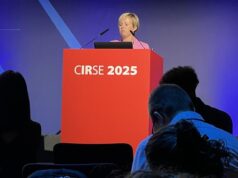
Treating hepatocellular carcinoma (HCC) with microwave ablation is safe in the elderly population, the first study investigating the efficacy and safety profile of this procedure in over 75 year olds reports.
Shicheng Zhou (Yong Loo Lin School of Medicine, Singapore) presented this research at the 2018 British Society of Interventional Radiology annual meeting (BSIR; 14–16 November, Bournemouth, UK), concluding that chronological age was not a predictor of longer hospital stay, postoperative complication rate, or of poorer overall survival.
In Singapore, HCC is the third and fourth most common cause of cancer-related death in men and women, respectively, and globally, it is the fifth most common cancer worldwide. Commenting on these figures, Zhou outlined the need for this work: “This is certainly cause for concern, and for good treatment options to be available. Percutaneous thermal ablation is an established curative treatment with a high technical success rate and good tumour control.”
An aging population in Singapore—and many other nations—also necessitates research specifically evaluating how the elderly population responds to different treatment options. The coupling of an increased life expectancy and a growing number of HCC screening programmes in Singapore has led to earlier detection of this cancer, and subsequently a greater number of patients undergoing curative treatment. The study investigators therefore set out to compare the outcomes of elderly and non-elderly patients undergoing curative percutaneous microwave ablation.
Zhou and colleagues conducted a retrospective review of 59 patients undergoing thermal ablation between 2013 and 2018. The data included treatment naïve HCC patients, and excluded those with metastases, suboptimal ablation, or tumour recurrence. Of the 59 patients included in the study, 18 were over 75 years old, and thus classified as elderly. Zhou et al evaluated patient demographics, tumour characteristics, and post-procedural outcomes, before analysing the data using the software SPSS.
There was no significant association between the age of the patient and the outcome of the procedure, indicating that, elderly or not, comorbidities do not predict a worse outcome in terms of percutaneous ablation. Cumulative survival at one year was 94.4% for the elderly population, and 92.7% for the non-elderly. At three-years, the survival was 66.7% for the elderly and 56.1% for the non-elderly population. After five years, cumulative survival was 50% in the elderly population, compared to 24.4% in the non-elderly population.
The finding that there was no significant difference between elderly and non-elderly patients in terms of procedural outcomes, length of hospital stay, complication rates and local recurrence rate was not necessarily expected. An older patient cohort is more likely than those under 75 to have a number of comorbidities and liver degenerative potential, possibly putting them at a higher risk of adverse effects post-procedure—the results of this study did reveal a higher incidence of hyperlipidaemia and hypertension in the elderly population.
However, Zhou also noted that, “Interestingly, the non-elderly population had a higher incidence of portal hypertension.” He continued: “We also found that the non-elderly population group actually had a worse pre-procedural liver function test, evidenced by the higher Bilirubin and aspartate transaminase levels [25.2µmol vs. 16.7µmol and 55.3U/L vs. 36.6U/L, respectively], and a longer prothrombin time [14.9 seconds vs. 13.8 seconds].”
Acknowledging this as a limitation of the study design, Zhou commented, “This [poorer pre-procedural liver function in younger patients] probably reflects the way a tumour is selected in our institution, and we recognise that this could be a potential source of selection bias. Perhaps older patients with better liver function and younger patients with poorer liver function were selected for ablation techniques.”
Zhou continued, “While not significant, the non-elderly population actually had a shorter survival. Conversely, the older population showed a longer survival period than our non-elderly population group. Perhaps our pre-procedural liver function rather than age itself predicts mortality.”
Additionally, the study investigators understand that as a retrospective, single centre study with a relatively small sample size, further work is needed with a larger cohort to increase the statistical clout of their conclusions.
Previous studies investigating the efficacy and safety of radiofrequency ablation in elderly HCC patients have reported mixed results. Hirokazu Takahashi and colleagues (Department of Internal Medicine, Saga Medical School, Saga, Japan) concluded in 2010 that radiofrequency ablation treatment might be safe and effective in both elderly and non-elderly patients, but Wei-Yu Kao et al (Taipei Veterans General Hospital, Taipei, Taiwan) found younger HCC patients to have a better prognosis after percutaneous radiofrequency ablation, as reported in 2012. Prior to Zhou et al’s work, to the authors’ knowledge, no study looked into microwave ablation in this patient cohort.












